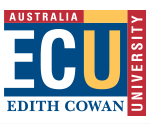Effects of parental stress, optimism, and health-promoting behaviors on the quality of life of primiparous and multiparous mothers
Document Type
Journal Article
Publication Title
Nursing Research
Publisher
Lippincott Williams and Wilkins
School
School of Arts and Humanities
RAS ID
25060
Abstract
Background: Parental stress, optimism, and health-promoting behaviors (HPBs) are important predictors of the quality of life (QoL) of mothers. However, it is unclear how strongly these predictors affect the QoL of mothers. It is also unclear if the impact of these predictors on QoL differs between primiparous and multiparous mothers. In this study, we defined primiparous as “bearing young for the first time” and multiparous as “having experienced one or more previous childbirths.”
Objectives: The first objective of this study was to examine the relative effect of parental stress, optimism, and HPBs on the QoL of mothers. The second objective was to investigate if the effect of these predictors differed between primiparous and multiparous mothers.
Methods: One hundred ninety-four Australian mothers (n = 87, 44.8% primiparous mothers) participated in an online survey that included the Parental Stress Scale, the Health-Promoting Lifestyle Profile II, the Revised Life Orientation Test, and the Quality of Life Enjoyment and Satisfaction Questionnaire.
Results: All predictors (parental stress, optimism, and HPBs) significantly affected the QoL of mothers; higher levels of optimism, greater use of HPBs, and lower parental stress were associated with higher levels of QoL for all mothers. Parity did not affect the relationships.
Discussion: This study sheds light on the nature and unique effect of parental stress, optimism, and HPBs on the QoL of mothers.
DOI
10.1097/NNR.0000000000000219
Access Rights
subscription content


Comments
Loh, J., Harms, C., & Harman, B. (2017). Effects of parental stress, optimism, and health-promoting behaviors on the quality of life of primiparous and multiparous mothers. Nursing Research, 66(3), 231-239. https://doi.org/10.1097/NNR.0000000000000219